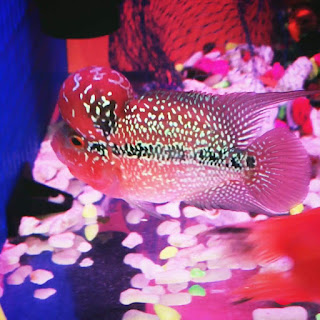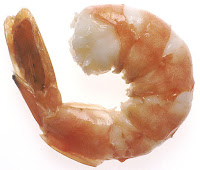9 Best Flowerhorn Types
Types Of Flowerhorn
I want to review more flowerhorn types in this world. Fish Louhan or known by the scientific name Flowerhorn is a type of freshwater ornamental fish that much loved fish lovers. This fish is very unique with the typical headed bump that is often called the jenong or head nong-nong. This characteristic turns out to have another difference that distinguishes louhan one with other louhan.Louhan fish are freshwater ornamental fish that live well in the aquarium. These fish usually only need aquarium with the size of 200 x 170 x 80 cm for fish that has a length of about 40 to 50 cm. Ideally in an aquarium filled with fresh water should have a temperature of 80-85 ° F.
9 Flowerhorn Types That Live Well At The Aquarium
Louhan fish is a hybrid species which means breeding of derived fish through the process of human intervention. This human intervention is usually to get a unique lump in the louhan's head. Several types of native louhan fish usually live in Southeast Asia especially in Malaysia and Taiwan. Here are some types of louhan fish you can collect in your tank:Flowerhorn Type Kemalau
 |
| Source : satwapedia.com |
Kemalau is a type of fish that is sought after by the people of Indonesia. The price of this fish can even reach tens of millions of rupiah because it is classified as a rare louhan fish species. This fish's properties are found in body parts that have distinctive pearls that can not be found in other fish species.
Flowerhorn Type Golden Base
 |
| Source : majalahikan.com |
Flowerhorn Type Louhan Cencu
 |
| Source : f15louhan |
Classic types have wanra that is more prominent but not many pearls, while the modern type has more pearls even up to the cheeks and head. The price of this louhan fish usually ranges from 40-thousand to 1.2 million rupiah.
Flowerhorn Type Kamfa
 |
| Source : majalahikan.com |
Flowerhorn Type Super Red Dragon
 |
| Source : hewnindonesia.com |
Flowerhorn Type Super Red Texas
One more type of super ted that comes from Thailand. He is a super red texas louhan which is the result of interbreeding between texas chiclod with louhan golden red. This fish is an example of crosslinked fish that breeding process through human intervention.Flowerhorn Type Rainbow King Fish
As the name implies, he is king in several international louhan contests. This fish originated in Singapore and defeated the popularity of other louhan fish such as kamfa. The color of the body that resembles a rainbow becomes the main reason for this fish is called a rainbow king.Flowerhorn Type Super Red Synspillum
Once a trend some time ago, louhan Super Red Synspillum fish makes Thailand as a good louhan manufacturer. SRS was once called the kamfa of Thai people. The color of this fish is red mixed with orange so it will look exotic when he swims.Flowerhorn Type Strom
There are still many who do not know the ins and outs of the presence of this louhan fish. Fish-lovers believe that this fish is a crossbreeding product conducted by fish lovers in Thailand so that a new species with horizontal marking and pearly presence in the head reminds us of the existence of chiclid texas.Jenong Louhan
Jenong or nonong is one of the reasons why the type of louhan fish favored by many people. In the early generations louhan had a jenong not too big and people called jenong type with the term "bone head". But now almost all louhan have big jenong type or the term "water head". Only male louhan fish have jenong although there is also a small portion of louhan female fish that has it.For Jenong form and proportional size Jenong in louhan contest is;
- Best shape: resembles a sphere of ball seen from the front and side
- Good shape: swan head, protrudes forward and extends sideways
- Unfavorable shape: not symmetrical (small, less widened to the side, less prominent forward, not protruding upward)
Gene factors in addition to food and the environment are the deciding factors of the jenong. If the genetics of the louhan breed does not support (aka not jenong) then it is difficult to expect the puppies will have jenong.
In addition to genetic factors, environmental factors, especially water, become one of the main factors for maximal growth of jenong louhan. Maintenance of good water is needed in addition to jenong also can prevent the occurrence of disease. Do not forget also foods with high protein content either pellets or other foods also determine.
Factors of dominance and aggression also become the determinant for the growth of jenong louhan. From an aquarium filled with dozens of burayak / louhan children, the most dominant and aggressive louhan fish will grow the largest jenong.
The use of a mirror as a driver of aggressiveness will help because the male louhan will feel there is a competitor when the mirror is confronted, and when the mirror lets the Louhan males feel that he is the dominant in his place.
Another one that can affect jenong is the size of the aquarium. The louhan fish will reach its maximum potential when the aquarium is considered large enough. And they will stop growing when the aquarium size is narrow enough for him.
Maintaining the louhan kamfa jenong is more difficult than the cencu type, it is necessary to support the environment so that jouong louhan kamfa can be maximized.
The nine types of louhan above have become a living part in our home aquarium. Some are very expensive and there are ordinary. All depends on the uniqueness of certain species and for the louhan fish, the bigger the nong-nong the higher the value.
Similarly reviews about 9 types of louhan fish that are suitable to be placed in the aquarium, you can find other information about ornamental fish on this blog. We suggest to visit the article 9 types of arowana fish from 4 different continents.
Long Flowerhorn Fish Road
To "produce" louhan fish in accordance with the desire required long and tiring process. Even sometimes it takes several generations to achieve it. (F1, F2 etc.). Not to mention the result of marriage of louhan fish will produce some fish (especially male) which is sterile / sterile so can not be reproduced anymore.Of the hundreds of children louhan fish are then sorted and only a few will be selected as a prospective mother. Some of these marriages even suffer defects because they are inbreed to "create" the uniform louhan seeds and have the trait or desired traits. The rest are "discarded" because they do not match expectations. It took approximately 8 months and even 1.5 years to wait for louhan tillers especially males to be ready to be mated back.
For example, to produce a red fish with full pearls in need of sires that will lower the pearl genes and broodstock with red. From the process of marriage it is only a few tail that will meet the criteria. Most puppies will only inherit pearls or colors from their sires. It took several generations of louhan for the fish to fit the breeder's wishes. Hence why the price of certain louhan fish can reach a very expensive price.
In theory, ideally to produce louhan with good quality required several stages.
1. Cross breed I -----> 2. inbreed -----> 3. line breed -----> 4. cross breed II
The first stage is crossbreed I by marrying louhan of male and female breeds with superior genes and having no blood relation. eg jenong genes and colors. Cross breed 1 is considered the most important stage of the next breeding stage. 75% tillers must be of average character. This is to avoid major risks in subsequent breeding stages (inbreed), and avoiding the set back that can waste time free.
The second stage is by breeding the breeder with the first stage result seed. Pups at this stage have low vitality. The goal, however, is to allocate superior genes and become sires for the next stage. In the end, the lack of vitality can be improved through the next stage.
The third stage is to marry the puppies from stage two with the louhan who is still close to his kinship with his uncle who is a pupil from the first stage.
In the Cross stage of Breed II, the louhan seeds from stage 3 are mated again with louhan which has no blood relation / very far kinship which has other advantages eg body shape. The goal is to improve the vitality (endurance of fish) in addition to refinement.
For more information about flowerhorn types or louhan fish types you can watch this video below.


Comments
Post a Comment